“Have a spoon full of honey every morning, to be healthy”.
In our search for “pure honey” and a healthy lifestyle, we cannot even imagine the environmental challenges and diseases facing the little insects making that honey.
Bees and honey are at risk
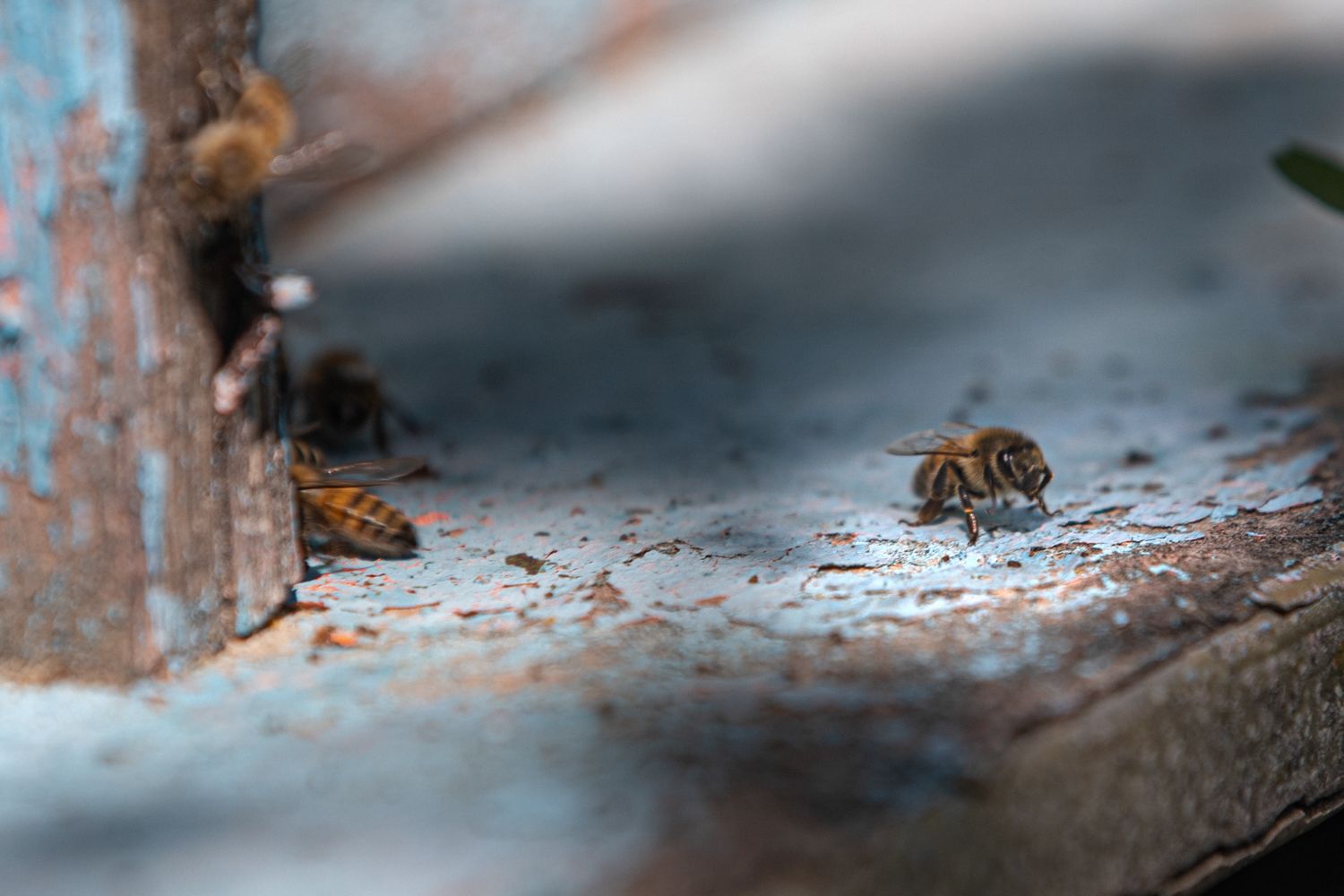
As the main pollinator for a number of agricultural crops, bees increase the yield and fertilization of fruit trees, herbs, and vegetables, which is a vital necessity for humans and for the stability of the animal world food chain.
Twenty beekeepers in the Ararat region lost a total of 300 hives in the spring of 2021.
The massive reduction in bee colonies today has become an issue on the agenda all over the world. According to US National Agricultural Statistics , the number of hives in the country has been reduced by 60% between 1947 and 2008, from 6 million to 2.4 million. Among the reasons for the decline are climate change and its adverse effects , tick-borne illnesses that are common among bees, an increase in the population of bee-eating birds, and pesticides used in horticulture.
Has the trend in bee colony reduction been felt in Armenia as well? What difficulties have beekeepers faced in recent years, and is the catastrophe experienced globally extending to the local agriculture and ecosystem as well?
To get answers to these questions, we conducted a research survey among 20 beekeepers in settlements within the Ararat region. The region was chosen due to the fact that apricots and a number of other crops bloom early; therefore, beekeeping season starts and ends early here.
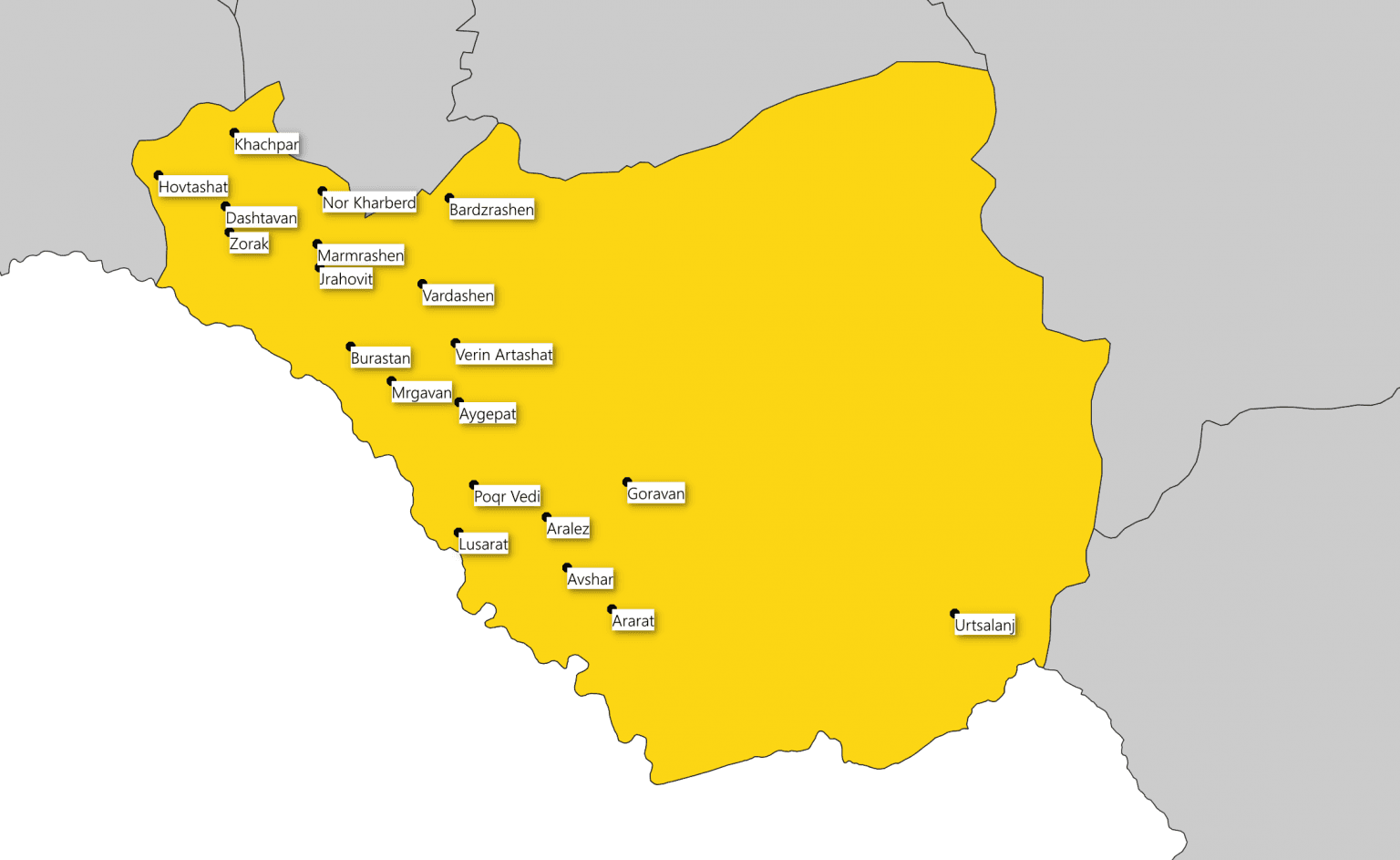
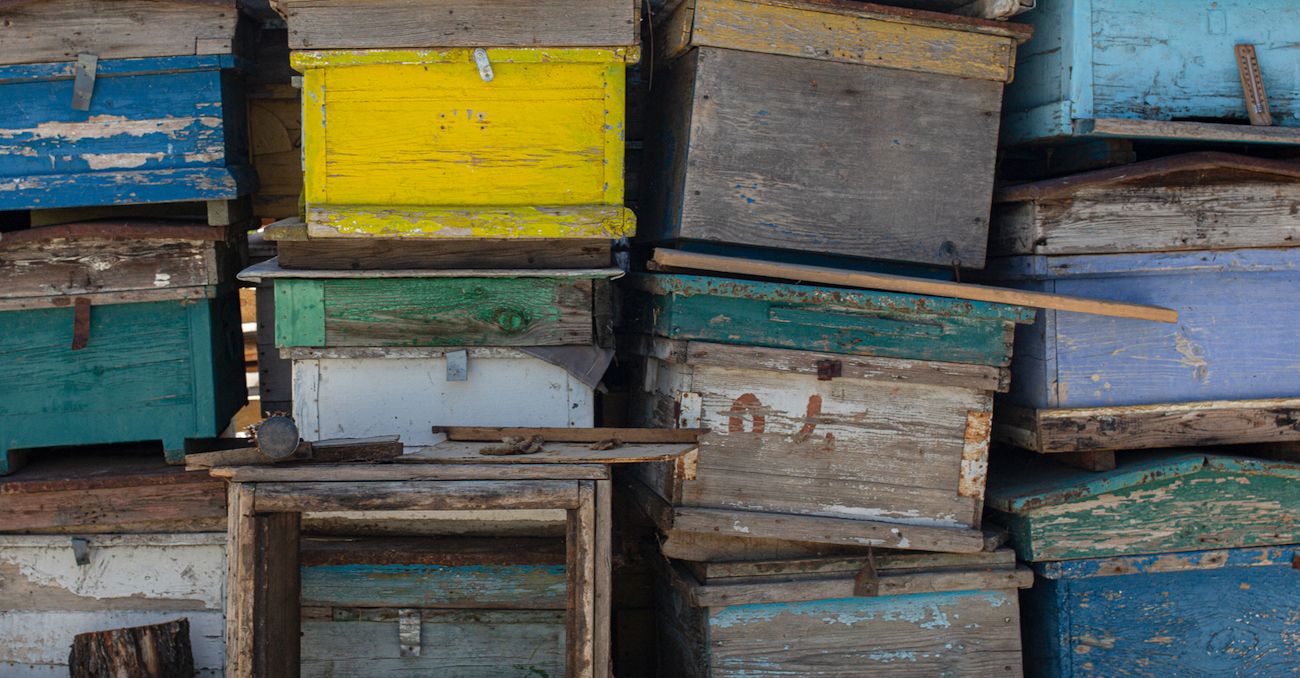
Demographics
We conducted the survey among 20 beekeepers in settlements in the Ararat region. The settlements were selected using QGIS, a geographic information system application, which randomly selected 20 out of 95 settlements. Individual beekeepers in the chosen settlements participated in the survey. As a principle, those who were first to respond were selected.
Most beekeepers are elderly, and beekeeping is typically work that is passed down in the family. Half of the 20 beekeepers surveyed have been engaged in this work for over 20 years.
Among the randomly selected respondents were one woman beekeeper and one national minority representative from the Assyrian community.
Hives
According to the survey data, there has been a general declining trend in the number of bee colonies since 2017. As of April 1, 2021, the decline has been sharp. Of the 20 surveyed beekeepers, 15 believe that the number of bee colonies has decreased over the last 5 years.
Many of the beekeepers reported that there have also been losses among beekeepers they know in other regions.

Data provided by the Ararat regional administration corroborates the decline in bee colonies. The year 2018 stands out in particular, as 1,200 more registered bee colonies were lost as compared to the year before. The declining trend was also found in later years but was not as sharp. If we look at the data per region, more than 2,200 bee colonies were lost in Ararat city, where beekeeping is most active and flourishing. In the area around Masis, around 150 hives were lost, whereas in the region around Artashat the number of bee colonies increased by around 300.
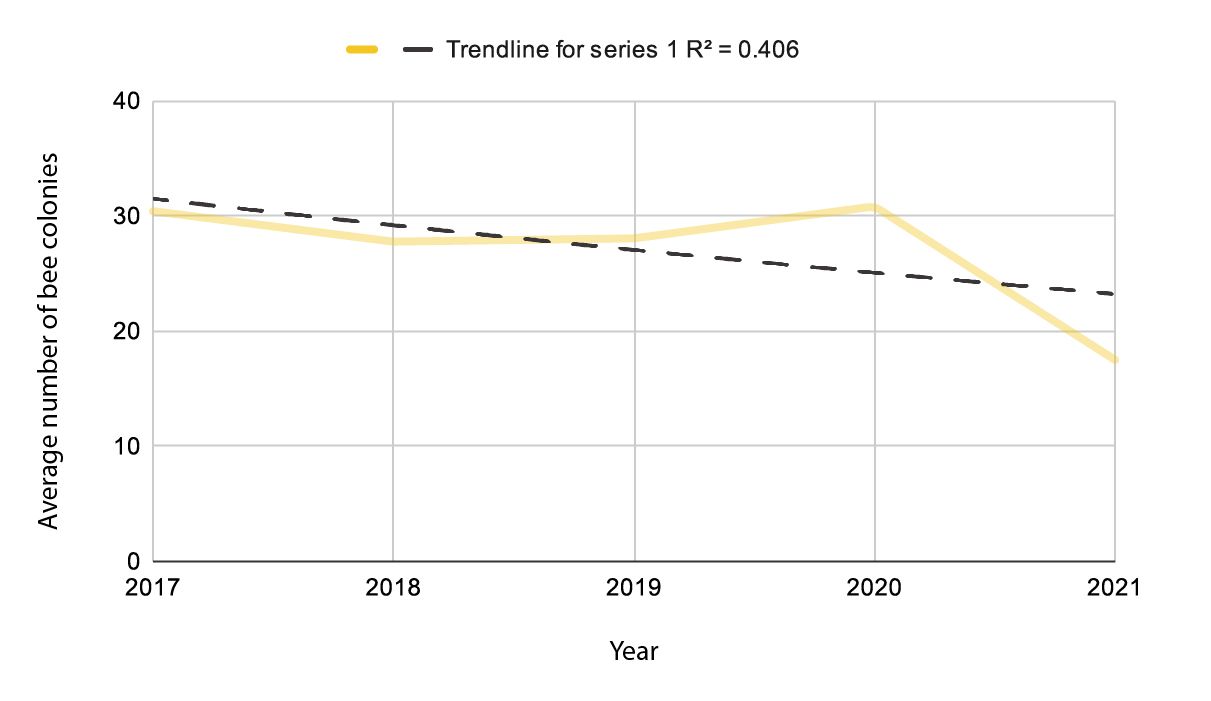

Causes for the decline
Many beekeepers don’t know the reasons for the massive decline in their bees. The following image is derived from the survey results where many share their speculations.
Most of the beekeepers believe that the main reason for the loss of bee colonies is disease and the use of fertilizers that are not bee-friendly. There is also distrust around bee medications.

The video describes the beekeepers’ losses in Hovtashat, Jrashen, and Avshar villages.
Pesticides
Non-apicultural pesticides are used in agriculture and horticulture, and are a major driver of bee decline around the world. Of the 20 beekeepers, 13 use fertilizers in their fields or spray their trees with such chemicals.
Climate change and air pollution
“Climate change is a comprehensive issue that is both urgent and extremely serious,” relays former RA Minister of Environment Erik Grigoryan in the 4th National Climate Change Report.
Climate change encompasses all fluctuations in the climate that last longer than specific weather events and relates to only those fluctuations that remain for a long period, usually decades or more. That change is anthropogenic global warming, which scientists say began in the 1800s.
According to the National Union of Beekeepers, honey production in the country declined 10-fo ld due to unfavorable climatic conditions. Bees work at a slower pace when temperatures increase above 30C. Bees work most diligently at 18-25C.
Climate change not only reduces bee efficiency but also time asymmetry. When spring comes early, that is when temperatures are above normal, the flowering process for trees and agricultural crops begins early. Bees that have just woken up from winter are not ready to collect nectar at that time.

According to the Hydrometeorological and Monitoring Center State Non-Commercial Organization (CSNO) data on the 1955-2019 fluctuations in air temperature (in °C), there has been a trend of rising temperatures in the Ararat region. Data was collected from three air stations located in the region–at Ararat, Urtsadzor, and Artashat.
The same CSNO data on the concentrations of dust, sulfur dioxide, and nitrogen dioxide in the ambient air from 2015-2020 show that there is a trend of increasing air pollution in the Ararat region.


Ticks and parasites
Ticks and parasites that cause diseases, like the widespread Varroa mite , are another threat to normal bee activity. Warm temperatures and frequent heat waves create favorable conditions for parasitic organisms to grow and reproduce. It is predicted that some regions of the country may be among the most vulnerable to the disease in the coming decades.
Diseases
The beekeepers who took part in the survey mentioned diseases as the main reason for the decline in bee colonies. Over the last 5 years, 6 beekeepers discovered illnesses affecting bees. Among these widespread diseases are varroasis, European foulbrood, and diarrhea.
Studies carried out in recent years show that the main reason for the decline in bee colonies in Armenia during the autumn, winter, and spring is the Varroa Jacobsoni tick. Bee colony declines can reach up to 100% in the case of varroasis (Reasons for the massive decline in honey bees in different countries around the world and Armenia, 2011, NASA, Biological Journal of Armenia).

Bee-eaters
Bee-eating birds (Meropidae) are regular unwanted guests of beekeepers that approach hives in cloudy weather, especially before or after it rains.
Nine out of the 20 beekeepers surveyed believe that the number of bee attacks by bee-eating birds has increased over the last 5 years and that, in general, the population of that bird species has increased. Seven of the beekeepers disagree, while 4 have not noticed any variations in trends.
In fighting against bee-eaters, beekeepers resort to various tricks, the most common of which is to drive them out with sound. One method of using sound against feathered predators is to hit metal objects together to scare them. Another is to use so-called “baby” or New Year’s Eve fireworks, sometimes with the use of a sling to fire them into the air. Some beekeepers report firing into the air with gunpowder. Others choose to shoot at the birds. It should be noted that the green species of bee-eating birds are registered in the Republic of Armenia’s Red Book (Decision N71 of the RA Government as of January 29, 2010), with a status of highly endangered. They are widely killed by beekeepers, since they look similar to the golden bee-eaters.

Queen bee
The three types of bees in the colony are the worker bees, drones (male), and queen bee, which is the largest (up to 25 mm long). The latter is only responsible for reproducing the next generation by laying eggs. Under favorable conditions, the number of spawns per day can reach 2,000 or more. The queen bee can live for 5 years, but after 2 years her spawning efficiency decreases. Therefore, it is necessary to replace the old queen bee with a young one every 2 years.
According to President of the National Union of Beekeepers Telman Nazaryan, bee colonies have become less productive in Armenia over the last 15 years, as queen bee breeding is not carried out. In other words, instead of an average harvest of 25-30 kg, 5-10 kg is obtained.
All the interviewed beekeepers breed queen bees themselves, and two also buy them.
Despite the problems in recent years connected with raising queen bees, our survey did not prove this hypothesis, since half of the respondents reported not having any issues with queen bees over the last 5 years. Eight did not agree nor disagree with the statement. Only 2 reported having problems, pointing out that queen bees left and didn’t return, which of course irreversibly impacts bee colonies and bee attacks.

Pollination sites
The active beekeeping season, the time when bee nectar is collected, is over when the flowers on trees fall and the other grasses and vegetation are not enough for bees to make honey. That is why nearly all beekeepers in regions with climatic conditions similar to Ararat move their hives to other areas full of flowering trees and vegetation.
Mountainous regions are considered to be the best honey-producing areas, where abundant honey is obtained in hot and humid years.
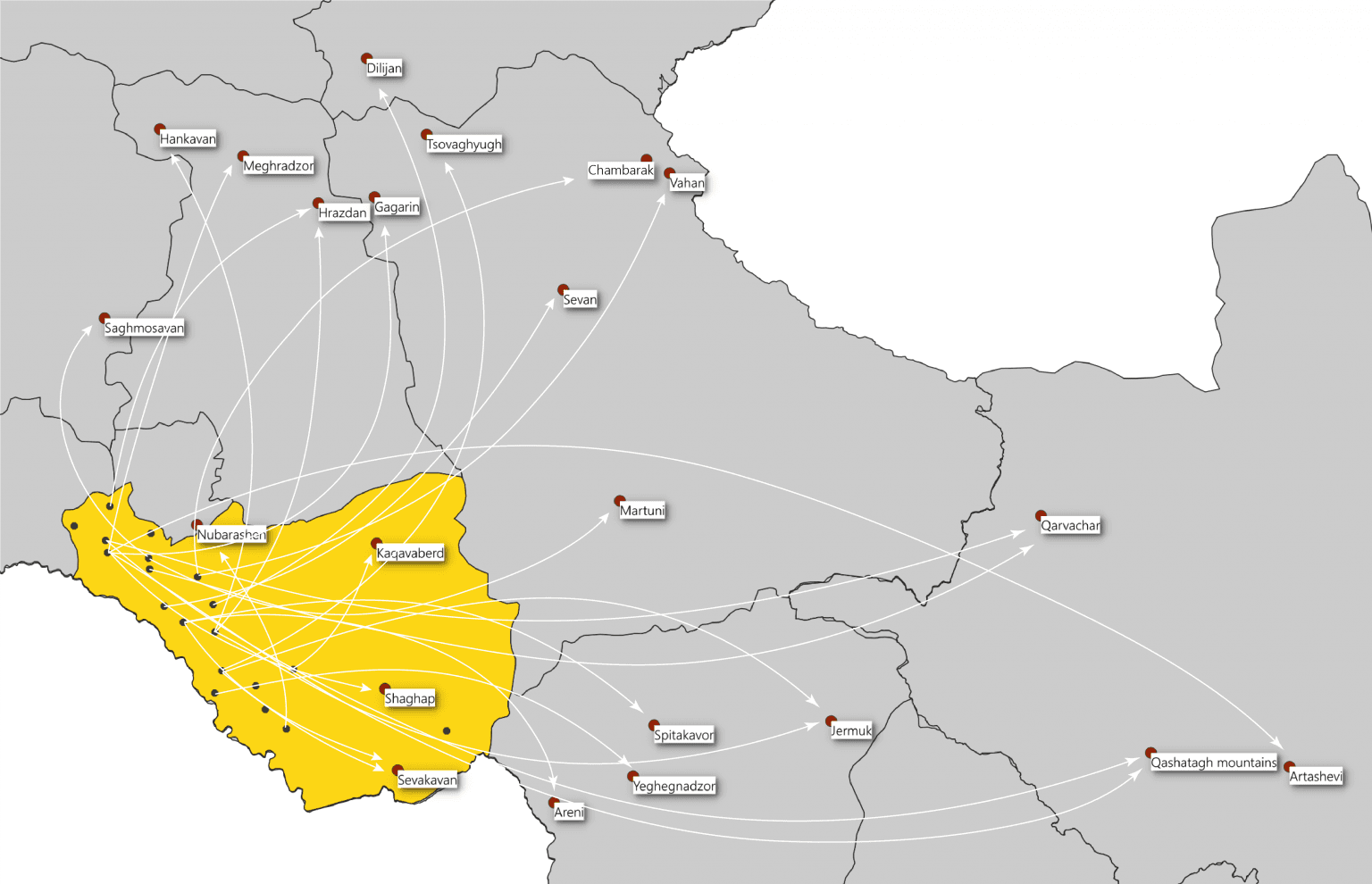
The 20 interviewed beekeepers move their hives mainly to the eastern or highland parts of the Ararat region (the Ararat or Vedu areas) as well as the Kotayk, Tavush, and Gegharkunik regions. In the past, they also took them to territories in Artsakh that are now under the control of Azerbaijan.

Scientific experiment
For the last 5 years, the Yerevan State University’s Faculty of Biology, Department of Biochemistry, Microbiology and Biotechnology, has been studying how bee intestinal diseases and bacteria are connected to air pollution.
“It all started when I read an article that most of the bee microbiome is lactic acid bacteria,” says Inga Bazukyan, PhD Candidate in Biological Sciences and associate professor.
A microbiome is the collective genome of microbes, consisting of bacteria, bacteriophages, fungi, protozoa, and viruses, that live inside the body of a living organism–in this case, in the intestines of bees.
“Studies have shown that bees die when there are changes to their gut microbiomes. The most interesting thing we discovered during the experiments is the presence of the Bartonella bacteria in bee intestines, which is dangerous and pathogenic to humans. We have not yet identified the species to be able to clearly say that it is the one dangerous to humans, but we think that the lactic acid bacteria in bee intestines keep the pathogens suppressed. That is why the bee does not die or is not considered the causative agent of those diseases,” explains Inga Bazukyan.
Originally, the research team’s thinking was that the bacteria in bee intestines could regulate insect health and immunity and could become more resistant to fertilizers and various diseases, which may help to solve the problem of the massive decline in bees.
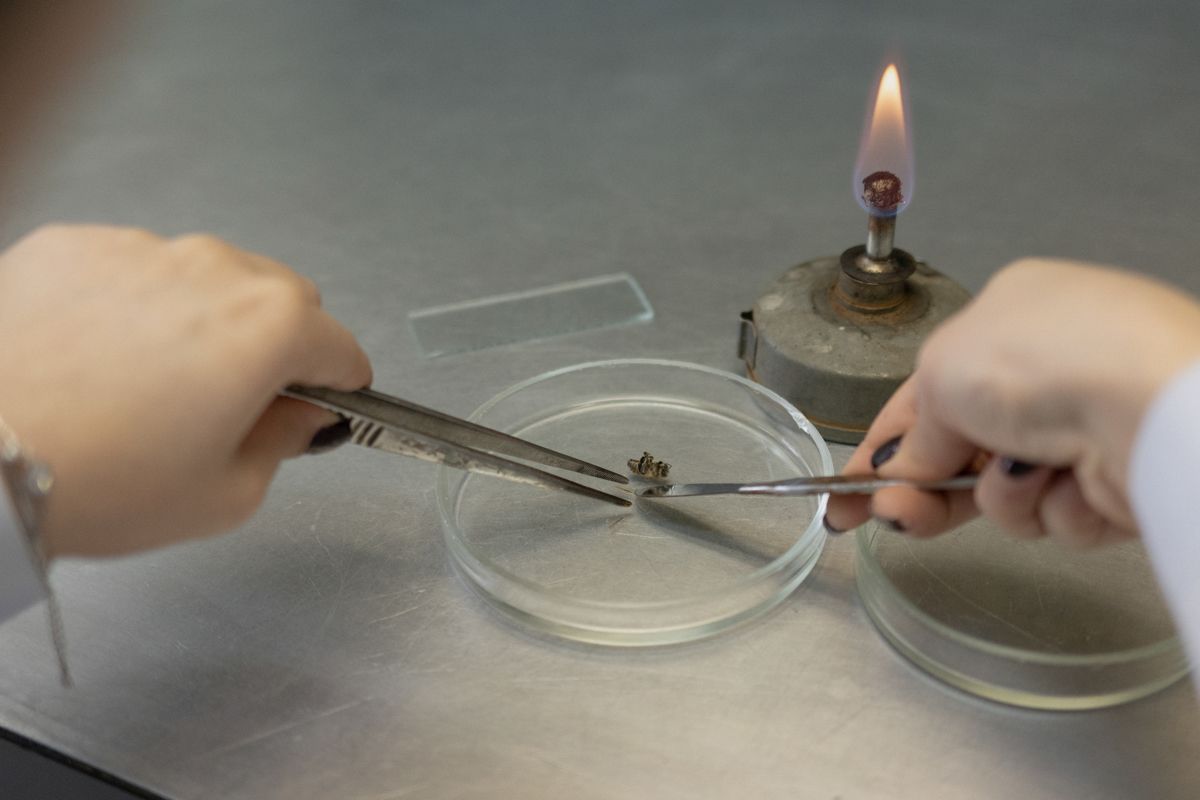
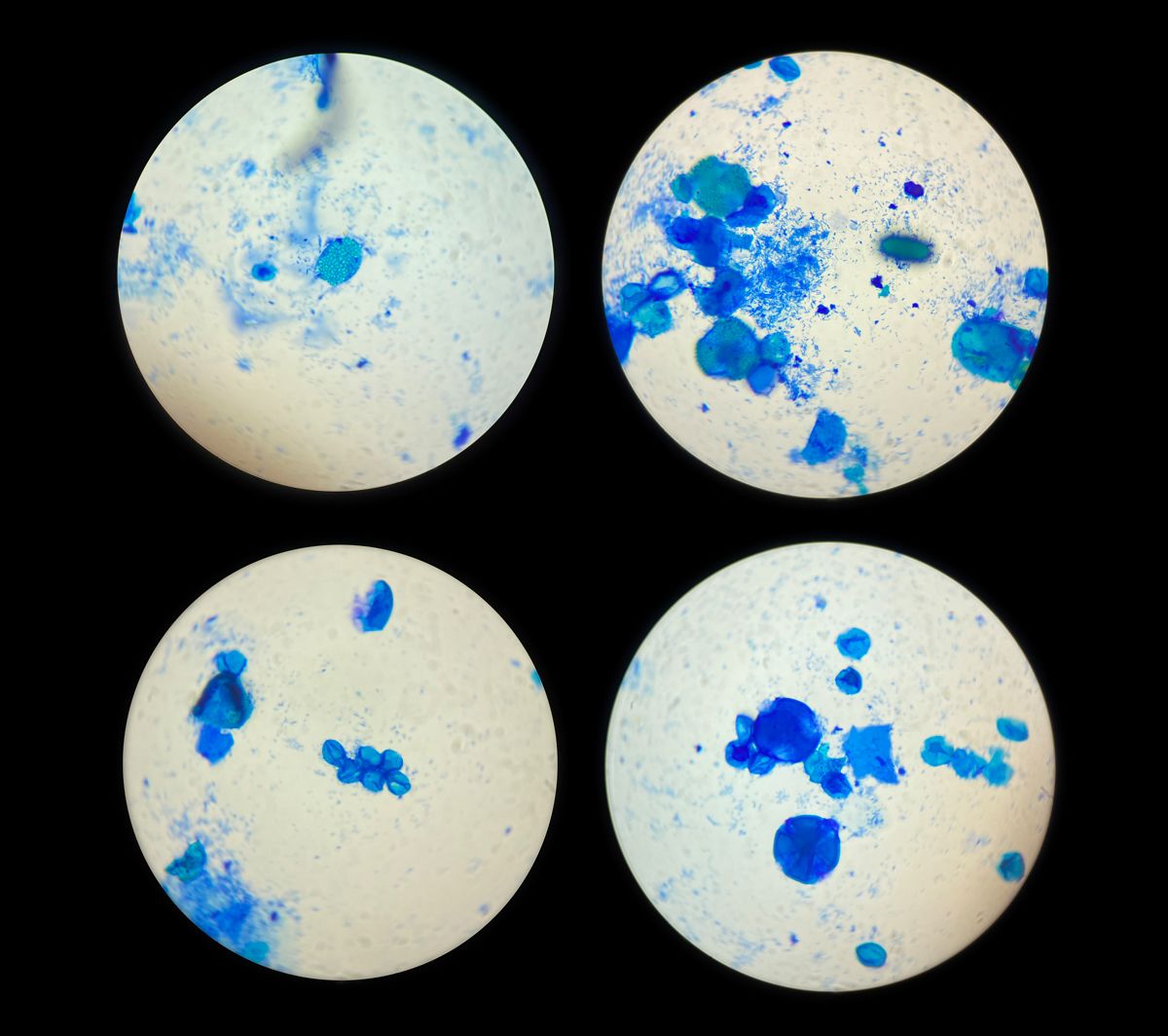
Genetically impure subspecies were formed by mixing bee species
Different species of bees live in the territory of Armenia, of which the Armenian yellow is an endangered species. During the Soviet years, people brought different bees from different countries, which had racial similarities with the Armenian species and mixed. Genetically impure subspecies emerged from mixing at the subspecies level, meaning that no new species is born. This phenomenon is called metisation.
“We do not have a pure species today, as we lost the aborigines,” says Martin Rukhkyan, a senior researcher at the General Helminthology and Parasitology Laboratory and PhD Candidate in Parasitology.

Everything in nature works on the principle of “mutual agreement”. Each area has bees whose trunk length allows for collecting nectar from flowers in the area. Different bee species have different trunk lengths. According to physical data, bees that are not native may go hungry from not being able to receive or only partially receive food from flowers, which suggests that subspecies resulting from a mix of local and imported breeds are also at risk.
Tick specialist Rukhkyan thinks that the mixing of bees may be the reason for the decline of bees in Armenia, thus the need to work on purifying bee genetics using molecular genetics.

Bees should be treated in a timely manner, following the instructions on the prescription
“The main losses of bees in the Ararat region are due to untreated in time, which harms not only the beekeepers who have a loss, but also me and the other beekeepers. The bees are in a constant cycle, as a result of which bee families in an entire village can be infected, ” says Sukias Badalyan, chairman of the Ararat Region Beekeepers’ Union.
According to a beekeeper with decades of experience, medicines should be tried on one bee colony first, then given to others by reading the instructions on the prescription, such as spreading greasy paper under the frames in the hive, tracing the signs, and so on.
“It is necessary to renew the bee population every five years to avoid perversion. “Generations of ‘sister-brother’ bees of the same family are not clean,” says the beekeeper.

Sukias Badalyan advises him to read Markosyan’s “Beekeeping” textbook, which will answer almost all the questions of both beginners and experienced beekeepers.

Even in studying only the experience of beekeepers in the Ararat region, a number of factors and problems emerged that could be the cause for the decline in the number of bee colonies. A final conclusion may only be reached after studying all regions of Armenia. Over the summer, we will be conducting surveys with 100 beekeepers from all regions of Armenia.

To be continued…
Supported by the British Council Armenia and Future News Worldwide
Author
Students
Christian
Ginosyan
Instructors
Instructors
Vahan
Stepanyan
Instructors
Kate
Mamyan
Instructors
Sona
Kocharyan
Team
Team
Ani
Hovhannisyan


